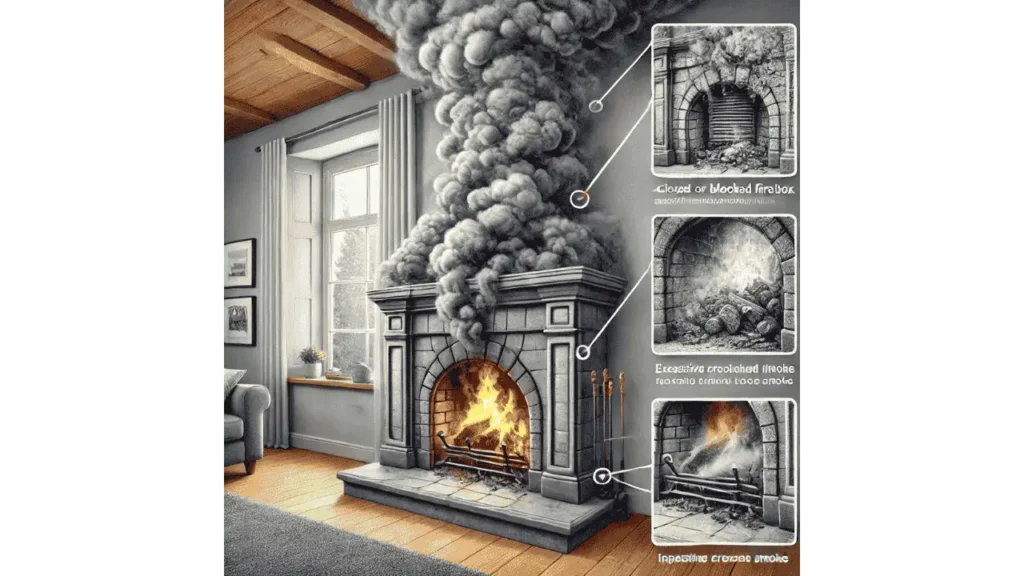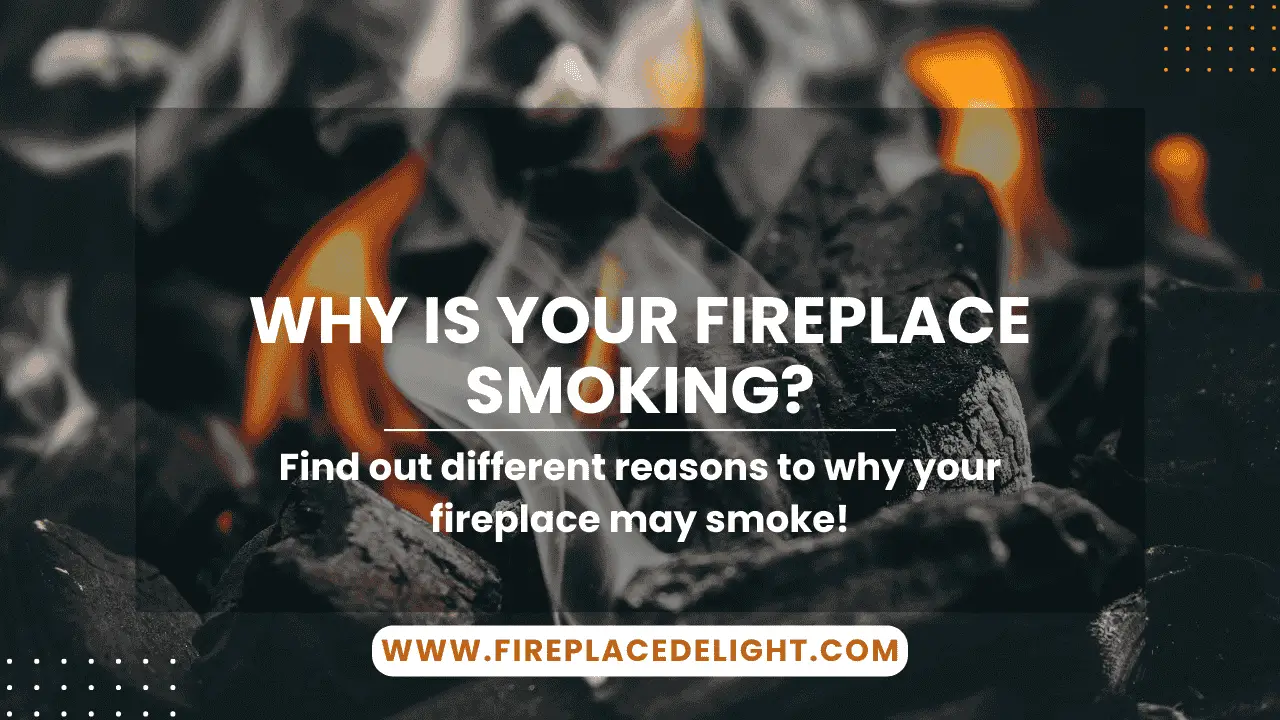A fireplace is meant to provide warmth and comfort, but when smoke starts filling your home instead of rising up the chimney, it becomes a frustrating problem. Various factors can contribute to poor ventilation, downdrafts, or blockages. Understanding the cause of the issue is the first step to finding the right solution. Here are six common reasons your fireplace might be filling your home with smoke and how to fix them.

Issue 1: Your Damper Is Closed
One of the simplest yet most overlooked reasons for a smoky fireplace is a closed damper. The damper controls airflow in and out of the chimney, and if it remains closed while a fire is burning, the smoke has nowhere to go but back into your home. Always double-check that the damper is fully open before lighting a fire. If it’s stuck or damaged, consider replacing it to ensure proper ventilation.
Learn More: Replacing Fireplace Doors!
Issue 2: Your Downdraft Is Too Cold And You Need An Updraft
Cold air in your chimney can create a downdraft, pushing smoke back into the house. This usually happens when the chimney flue is colder than the indoor air, preventing the smoke from rising properly. Preheating the chimney before lighting a fire can help create an updraft. You can do this by rolling up a newspaper, lighting it, and holding it near the damper to warm up the air and establish a proper airflow.
Issue 3: Your Damper Is Open And It Isn’t Working
Sometimes, even if the damper is open, it might not be functioning properly. A faulty damper can restrict airflow, preventing smoke from escaping efficiently. Inspect the damper to ensure it is fully operational. If it’s rusted, warped, or difficult to move, it may need repairs or replacement. A well-functioning damper is crucial for proper chimney ventilation.
Issue 4: You Have The Wrong Size Damper
The size of your damper plays a key role in smoke ventilation. If your damper is too small, it won’t allow enough airflow to carry the smoke out, causing it to back up into the room. Conversely, an oversized damper can create excessive airflow, reducing the efficiency of your fireplace. Ensuring you have the correct size damper for your fireplace can help prevent smoke problems and improve overall performance.
Issue 5: Your Home Has Competing Air Pressure
Modern, well-sealed homes can sometimes create negative air pressure that competes with the fireplace for airflow. Kitchen exhaust fans, bathroom vents, and HVAC systems can pull air out of the home, making it harder for the chimney to draw smoke upward. To fix this, try opening a nearby window slightly while using the fireplace to balance the air pressure. If the issue persists, consider installing an air supply vent near the fireplace.
Issue 6: You Need a Draft Fan
If all else fails, installing a draft fan can help improve chimney airflow. A draft fan works by actively pulling smoke and gases up and out of the chimney, preventing them from spilling into your home. This is especially useful for fireplaces in homes with poor ventilation or structural issues affecting the chimney’s draft. Investing in a draft fan can provide a reliable solution to persistent smoke problems.
Read More: What is a Masonry Fireplace?
Final Takeaways
A smoky fireplace can be frustrating, but identifying the cause makes it easier to find the right fix. From checking your damper to balancing air pressure or installing a draft fan, there are several ways to improve airflow and keep smoke out of your home. Regular maintenance, proper ventilation, and understanding how your chimney functions can ensure a safer and more enjoyable fireplace experience.
- Why Does My Fireplace Smell Like Smoke When It Rains? - April 18, 2025
- What Is a Fireplace Fodder? - April 14, 2025
- Is Almond Wood Good for Fireplaces? A Guide to Heating with Almond Wood - April 12, 2025
